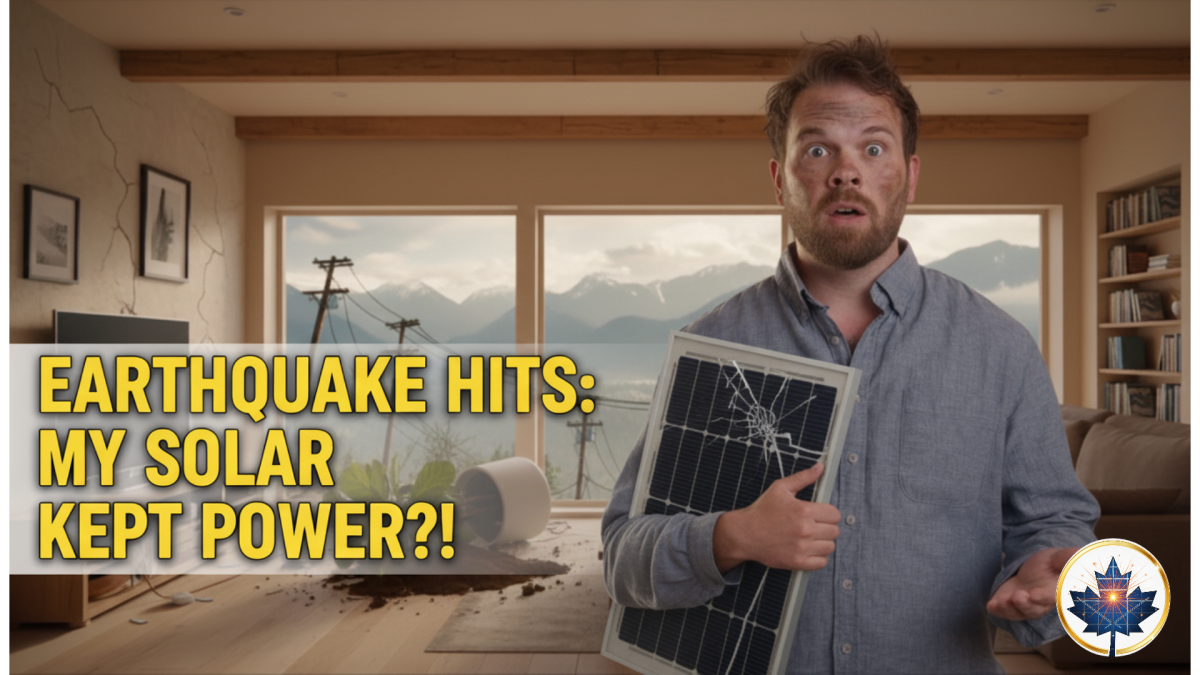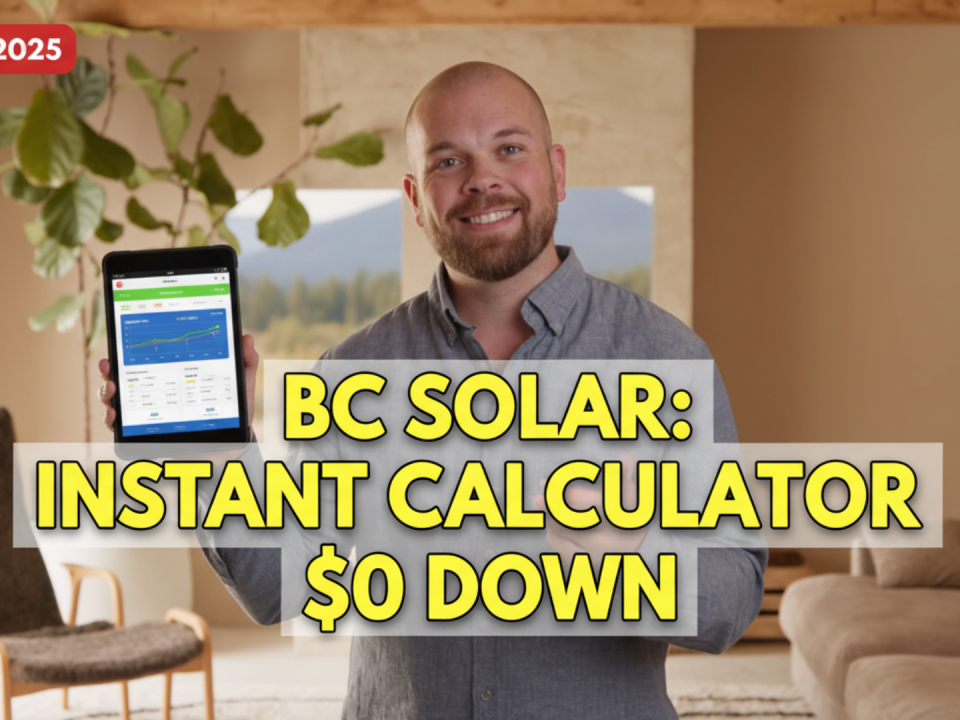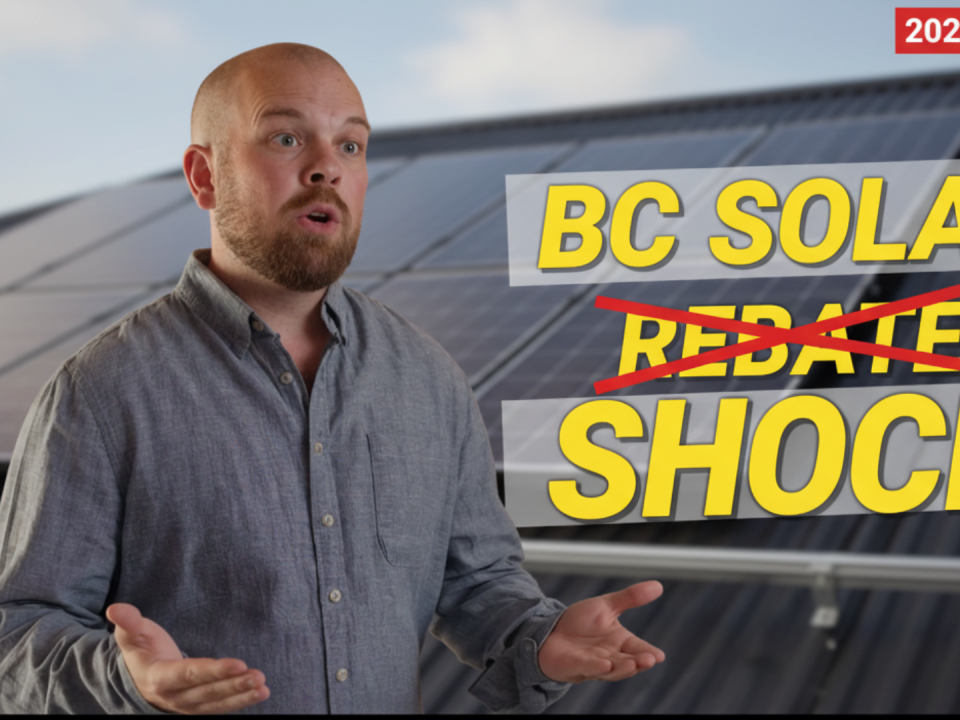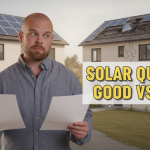
How to compare solar quotes and choose the right solar installer in Canada
November 7, 2025If you live in British Columbia, you’ve heard about it. We all have. We talk about it, we get the alerts, but it’s hard to really picture it: “The Big One.”
It’s not a scare tactic; it’s a geological fact. We live on the edge of the Cascadia Subduction Zone. Natural Resources Canada is very clear: there’s a significant probability—some estimates are as high as 10-15%—of a massive, Magnitude 9.0 (or greater) megathrust earthquake within the next 50 years.
The shaking is one problem but my focus is on the real disaster: the aftermath, when the power grid collapses.
I get this question all the time from clients. “Vitaliy, I want solar, but what’s the point if it’s all going to shatter in an earthquake?” or “Will solar even work if the whole city is dark?”
These are the right questions. The concern is real. You’re not just investing in energy; you’re investing in security. So let’s look at the data, get past the myths, and figure out if solar panels are a reliable part of your emergency plan.
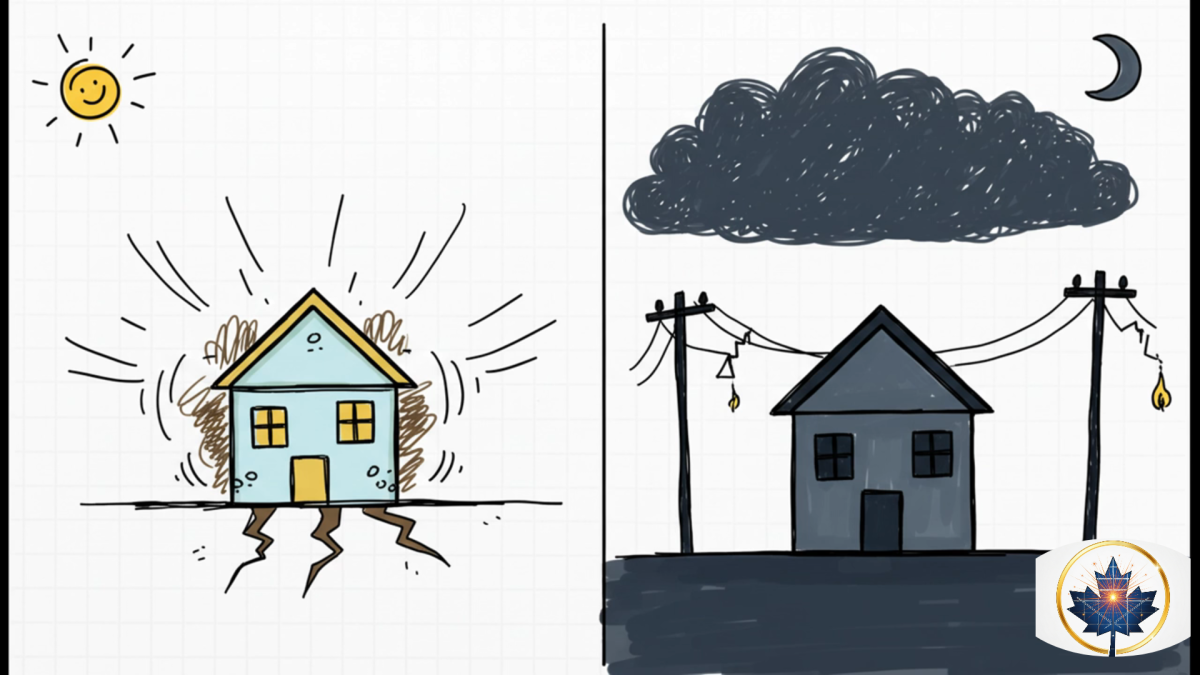
The Shaky Ground: What “The Big One” Means for BC’s Power Grid
To understand the solution, we first have to be very honest about the problem. A Magnitude 9.0 earthquake is not a normal event. It’s an event that can last for three to five minutes, with ground-shaking so violent it can cause liquefaction—where solid ground behaves like a liquid.
Understanding the Cascadia Subduction Zone
This isn’t a single fault line like the one in California. The Cascadia Subduction Zone is a 1,000-km-long fault that runs from Northern Vancouver Island down to northern California. The Juan de Fuca tectonic plate is slowly sliding under the North American plate. It’s stuck right now, building up stress. When that stress releases, the entire region will jolt.
What Happens to the Grid When a 9.0 Hits?
Our power grid is a complex network, and it’s fragile. Think about what keeps your lights on:
- Transmission Towers: These giant steel structures carry high-voltage power over long distances. They are vulnerable to landslides and to the ground-shaking itself.
- Substations: These are the hubs that convert power for local use. They are full of massive, heavy transformers and delicate ceramic insulators. They are not built to withstand minutes of violent rolling.
- Utility Poles: Wooden poles carrying lines to your house are the most obvious weak point. They will fall.
BC Hydro is actively working to seismically upgrade its infrastructure, which is a massive and expensive task. They are very open about the risks.
The Problem Isn’t Just Hours, It’s Weeks
This is the key point. In a major quake, the power won’t be back on in a few hours. Utility crews will be overwhelmed, and access will be impossible in many areas. Government of BC estimates warn that residents should be prepared to be self-sufficient for at least one week, but widespread power outages could last for weeks or even months.
So, the question is: can you have power when the grid doesn’t?
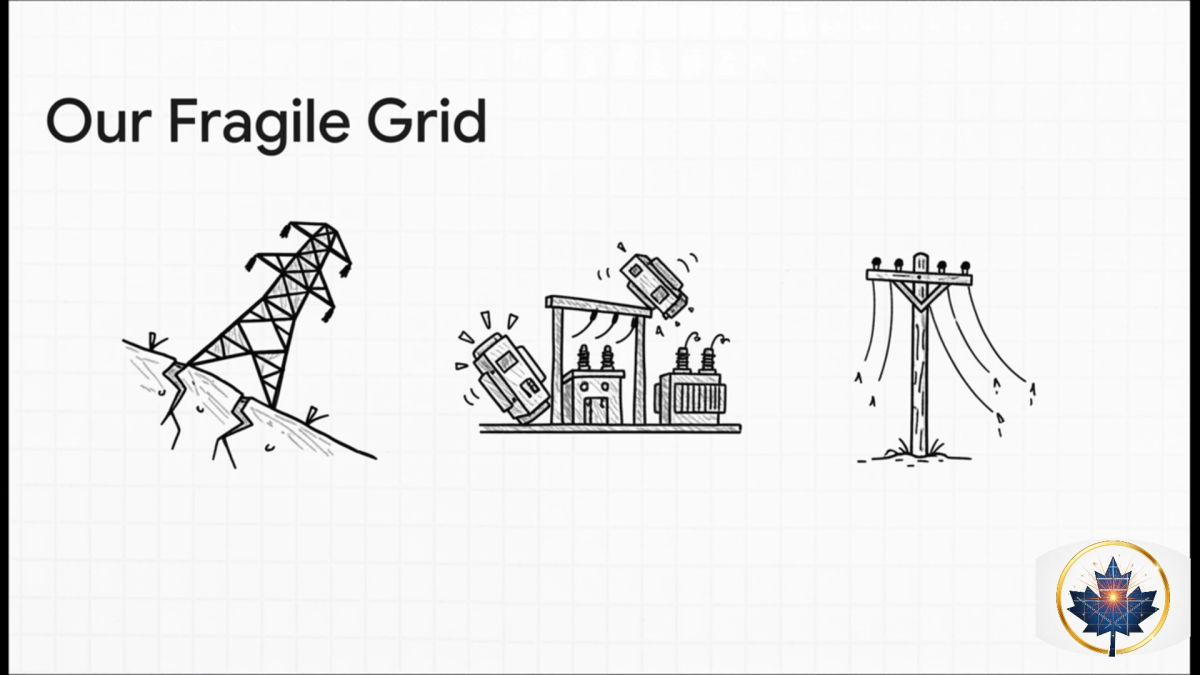
Can Solar Panels Even Survive a Massive Earthquake?
This is the first big hurdle. People see a solar panel and think of a fragile sheet of glass. It’s a fair assumption. But the reality is different.
Myth vs. Reality: “Glass Panels” vs. “Engineered Systems”
A modern solar panel is an incredibly durable piece of equipment. They are made with tempered glass and designed to withstand 1-inch-diameter hail striking at over 80 km/h. They are tested against extreme wind loads. Shaking, by itself, is not their biggest enemy.
The panels are built into sturdy aluminum frames. They are solid. I’ve handled hundreds of them; they are not delicate.
The Real Weak Point: Racking and Installation
This is the single most important part of the conversation, so let me be direct: A solar panel is only as strong as its mounting. The real risk isn’t the panel shattering from shaking; it’s the entire array detaching from your roof. The system that holds the panels—the racking—is the key.
- A cheap, poorly-installed system might use lag bolts that just go into the roof decking. This is a failure point.
- A professionally-installed, code-compliant system will use mounts engineered to attach directly to the structural rafters of your roof. The BC Building Code has specific seismic load requirements. Your installer must follow them. The system is designed to become part of your house and move with it during a quake.
Honestly, if your solar panels get ripped off your roof in a quake, it’s likely your roof itself was failing. A good installation is engineered to hold on.
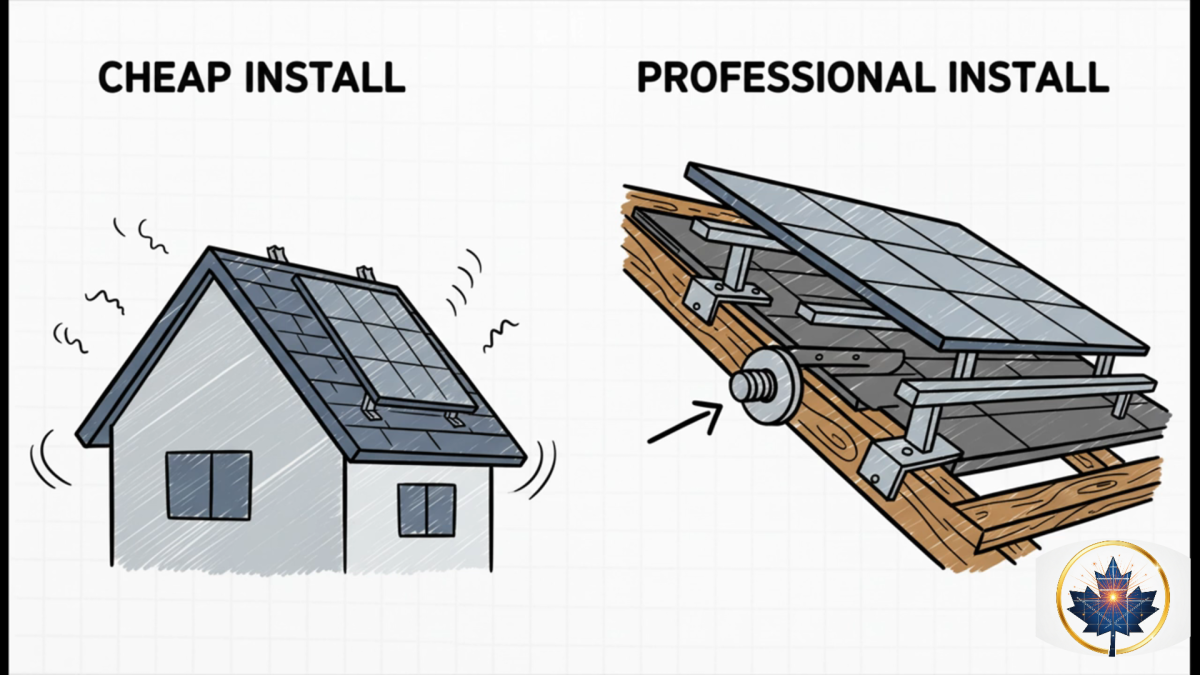
Data from Disasters: How Solar Fared in Real-World Tests
This isn’t just theory. We have data from some of the worst disasters in recent history.
Case Study: The 2011 Tōhoku Earthquake (Japan)
This is our closest comparison: a massive Magnitude 9.0-9.1 megathrust earthquake, followed by a devastating tsunami.
What happened to the solar panels? Multiple reports from the time confirmed that rooftop solar systems survived the earthquake with almost no damage. The shaking itself did not break the panels or rip them from roofs.
Many systems were, of course, destroyed by the 40-meter-high tsunami that came after. That’s a different force entirely—no rooftop system can survive being submerged in debris-filled seawater.
But the key takeaway is that for the millions of people outside the tsunami zone, their solar panels were intact. Their problem? The grid was down.
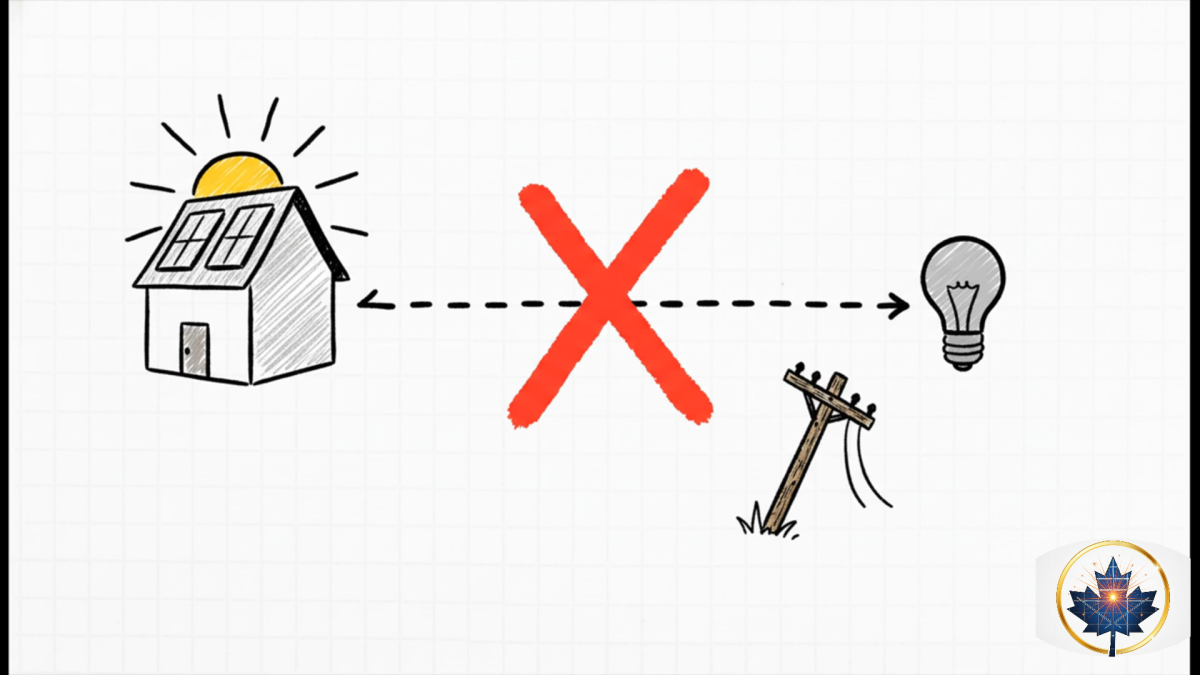
Case Study: The 2011 Christchurch Earthquake (New Zealand)
This quake was a “smaller” 6.3 magnitude, but it was extremely shallow and directly under the city, causing violent shaking and massive structural damage.
The New Zealand solar association reported “virtually no damage” to the solar panels themselves. Again, the grid was the problem. The panels were fine, but the city was dark.
Case Study: Hurricane Maria (Puerto Rico, 2017)
This isn’t an earthquake, but it’s our best case study for grid failure. Maria was a catastrophic Category 4/5 hurricane that destroyed 100% of Puerto Rico’s power grid. Some people were without power for 11 months.
This is where solar changed the story. NREL (National Renewable Energy Laboratory) studied the aftermath and found that the small-scale solar systems with batteries were lifesavers.
Homes and community centers with solar-plus-storage became “islands of power.” They were critical infrastructure, powering refrigerators for medicine, charging phones for communication, and running life-saving medical devices. We saw this in real-time in Jamaica after a major hurricane: one woman’s home, with its panels intact, became a community hub for charging devices and getting news.
This event fundamentally changed the reason for going solar in disaster-prone areas.
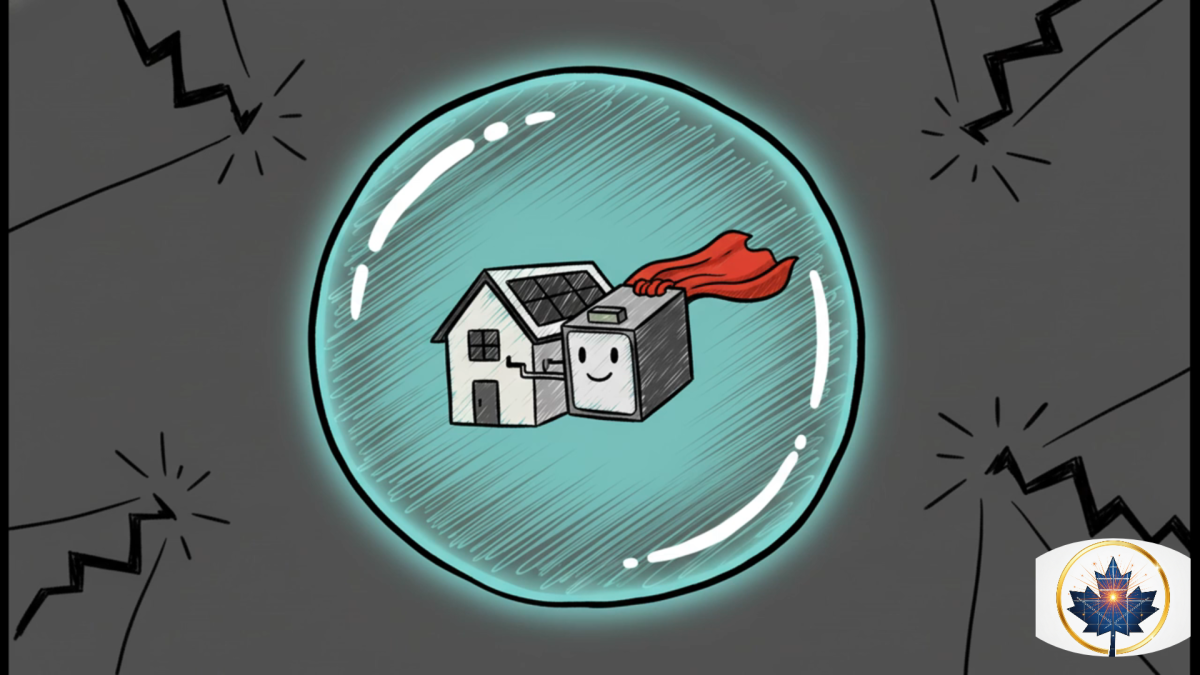
A Quick Table: Solar Performance in Major Disasters
| Disaster Event | Magnitude/Category | Primary Panel Damage | Key Takeaway |
|---|---|---|---|
| Tōhoku Earthquake (Japan, 2011) | 9.0-9.1 Mag | Low (from shaking). High (from tsunami). | Panels are tough. The grid is the weak link. |
| Christchurch Earthquake (NZ, 2011) | 6.3 Mag (Shallow) | Extremely low. Minor racking issues. | Quality racking holds up even in severe shaking. |
| Hurricane Maria (Puerto Rico, 2017) | Cat 4/5 | Moderate (from wind/debris). | Solar + Battery is the key to resiliency. Grid failure is the real disaster. |
The Critical Detail: Why Solar Alone Isn’t Enough
The data from Japan and New Zealand shows us something vital: the panels surviving is only half the battle.
Understanding “Grid-Tied” Systems (And Their Big Flaw)
Almost all solar systems installed today are “grid-tied.” This means they are connected to the BC Hydro grid. If you produce extra power, you send it to the grid. If you need more, you pull from it.
But they have a critical, legally-required safety feature called “anti-islanding.”
This feature means that if the grid goes down, your solar inverter must shut down immediately. This is to protect utility workers who are trying to repair the lines. Your system cannot be allowed to send power back into what is supposed to be a dead grid.
So, let me be very clear: If you have a standard, grid-tied solar system with no battery, it will NOT provide you with power during an outage. Even if it’s a perfectly sunny day.
The Real Hero of the Aftermath: The Battery
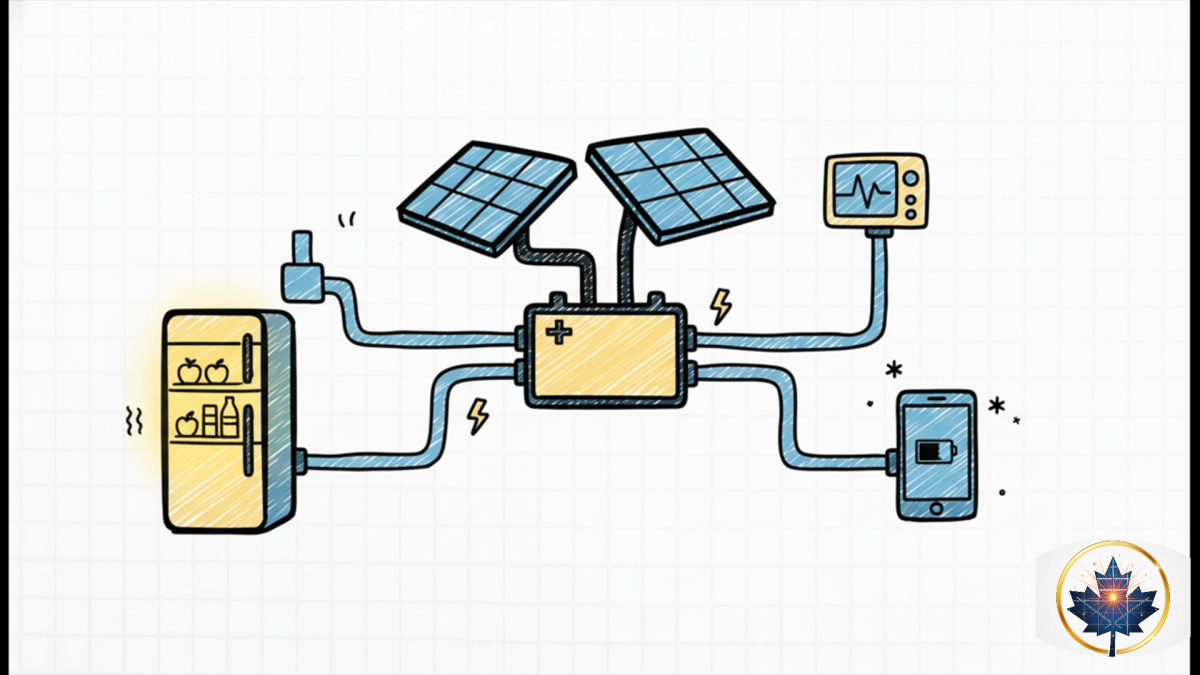
This is the game-changer. A home battery system (like a Tesla Powerwall, Enphase, or others) works with your solar panels to create your own personal “microgrid.”
Here’s how it works:
- The Grid Fails: The system senses the grid is down.
- It “Islands” You: A special switch (an automatic transfer switch) disconnects your home from the grid instantly and safely.
- Power On: Your system tells the battery to start powering your essential loads (fridge, lights, outlets).
- The Sun Comes Up: Your solar panels, instead of being shut down, now work to recharge your battery.
This is how you get power for days or weeks. The solar recharges the battery; the battery powers your home. This is true energy independence.
My Own Experience: The “Island” of Power
A few years back, a major windstorm—not an earthquake, but a serious event—hit my region. Power was out for over two days. It was cold and dark.
My house, however, was fine. The system clicked over to battery power so fast, the lights just flickered once. The fridge stayed cold, we had internet, and we could charge our phones. It was a very strange feeling, being the only house on the street with its lights on.
It made me realize this technology isn’t just about saving money or the environment anymore. It’s about security. It’s about not being helpless.
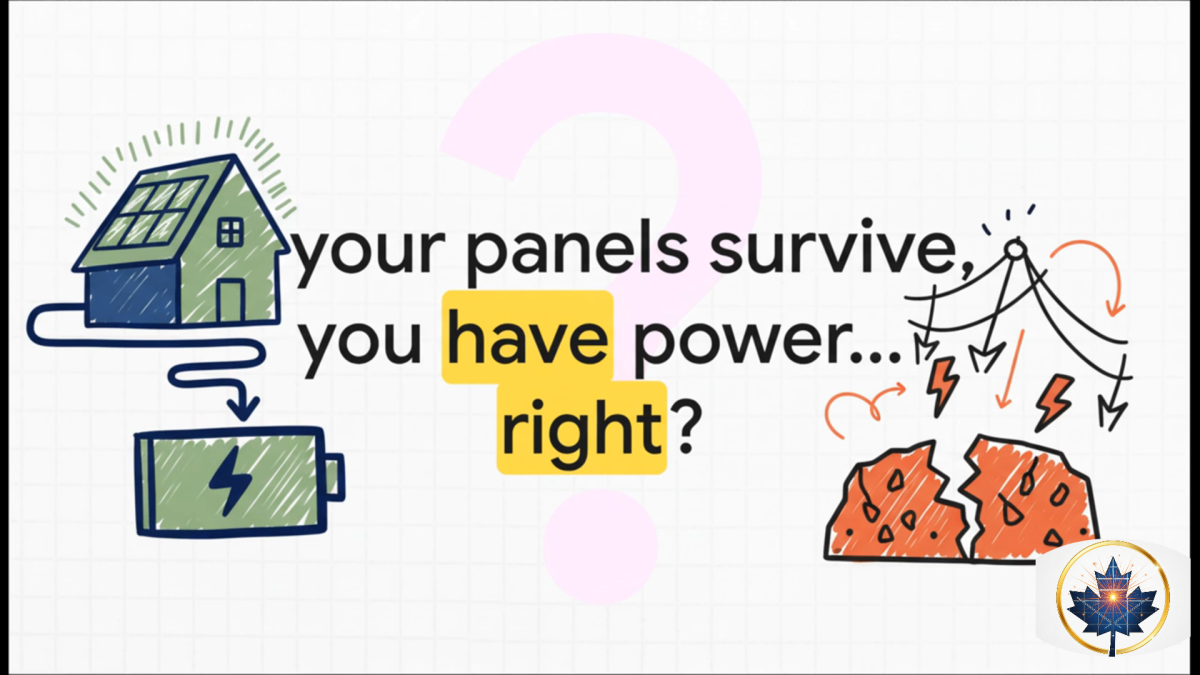
How to “Seismic-Proof” Your BC Solar Installation
If you’re considering solar for resiliency, you have to do it right. “Good enough” isn’t good enough when a 9.0 is on the line.
1. It’s All About the Racking (Again)
I can’t say this enough. You need an installer who uses top-tier racking systems engineered for high wind and seismic loads. Ask to see the engineering specifications. Ask how they attach to the roof. It must be to the structural beams (rafters or trusses).
2. Find an Installer Who Understands BC’s Seismic Code
This is not a job for a general roofer or a “guy in a truck.” You need a certified, experienced solar installer who lives and works in BC. They must understand the local building code inside and out, from installation costs on Vancouver Island to the specific requirements in Kelowna or Vancouver.
Tip for Hiring: Ask them this question directly: “How do you account for seismic loading and the specific uplift requirements for my roof in your installation plan?” If they can’t give you a clear, confident answer, find someone else.
The cost of solar panels in BC is a factor, but paying for a cheap install is a massive risk. Make sure they also understand all the available BC solar rebates to help with the investment.
3. Tip: Secure Your Batteries and Inverter
This is a critical oversight I’ve seen. People secure the panels, but what about the rest of the system? Your batteries (which can weigh 100-300 lbs) and your inverter must be securely-braced to your garage wall. They should be bolted directly into the wall studs. The last thing you want is your $15,000 battery bank tipping over and breaking in the first 30 seconds of the quake.
4. Ground-Mount vs. Rooftop
If you have the space on your property, a ground-mount system can be an excellent option. It’s built on its own concrete footings, which can be engineered to be incredibly stable. But for most of us in urban or suburban BC, a well-installed rooftop system is the most practical and effective solution.

The Bottom Line: Is Solar a Smart Move for BC’s Big One?
So, let’s circle back to the original question. Will solar panels save us?
It’s Not a Shield, It’s a Lifeline
Let’s be perfectly clear. Solar panels will not stop your house from shaking. They won’t stop a tsunami or put out a fire.
But a properly installed solar system with a battery is one of the single most powerful tools for resiliency you can own.
It’s a lifeline. It’s the ability to keep your food from spoiling. It’s the ability to power a small heater or fan. It’s the ability to charge your phone to contact loved ones or get emergency broadcasts. In a long-term outage, these are not conveniences; they are survival tools.
The Shift in Thinking: From “Savings” to “Resiliency”
For most of my career, the reason to go solar was financial: save money on your bill. That is still 100% true. But for anyone living in BC, the equation has changed.
Resiliency—the ability to take care of yourself and your family when the systems we rely on fail—now has a value. You can’t put a dollar amount on it until the day you need it. And on that day, it’s priceless.
The “Big One” is a heavy topic. But we can’t ignore it. We can only plan for it. A solar-plus-storage system is a serious, practical part of that plan. It gives you a measure of control in a situation that feels completely out of our control.
Thanks for reading. Stay safe and be prepared.

